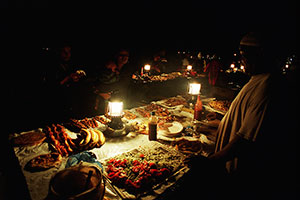News
In rural Tanzania, access to energy services has steadily increased over the past five years, leading to changes in community life. Women, in particular, have benefitted from these changes. As well as opening up opportunities for entrepreneurship, daily life has become easier. A recent field survey in Tanzania showed that the increased availability of energy had improved local infrastructure so that women did not have to commute as far—or wait in line as long—for basic services.
Facilitating access to modern, efficient and reliable energy sources in rural areas in Tanzania has been the work of the country’s Rural Energy Agency (REA). Since its inception in 2007, the REA has supported a number of projects targeted at women, including dissemination of energy efficient stoves, promotion of more efficient alternatives to charcoal such as briquettes and pellets, and training on the development and use of biogas.
Despite these programs, the REA has lacked a clear ‘gender roadmap’ to help it systematically understand the different needs of women and men when it comes to energy use and access, and to evaluate how energy services were impacting men and women differently. Although the REA’s work was having an impact on the lives of women, a lack of baseline information disaggregated by gender meant it was difficult for the agency to fully measure the effectiveness and impact of its interventions.
In response, the World Bank has worked with the REA to develop a strategic gender action plan. The initiative is supported by ESMAP through the Africa Renewable Energy Access Program (AFREA) and draws directly on the resources that ESMAP has developed to help integrate gender into energy projects. The objective of the program is to increase awareness and capacity to understand and address gender in rural energy projects, to ensure that REA’s work benefits both men and women.
“Our agency is committed to making gender considerations an integral part of everything we do,” said Lutengano U.A. Mwakahesya, Director General of the REA. “This allows us to benefit from a diversity of experience, and to fully maximize the benefits of our human resource base.”

As part of this initiative, the agency conducted a baseline assessment of how gender was understood and mainstreamed into monitoring and evaluation, training, and operations within the organization itself, as well as an audit of how well gender considerations had been integrated into existing projects. This resulted in the development of a gender strategy for the organization, as well as tools—including indicators, checklists and guidelines—for integration of gender into programs. This is similar to work ESMAP has supported in other countries in Africa, including Senegal, Mali, Kenya and Benin.
The gender strategy grew out of, and is linked to the REA’s overall Strategic Plan and defines the overall gender goal and specific objectives to be achieved. These include creation of a gender unit, integration of gender indicators in all reference documents and recruitment processes, and development of a gender disaggregated database. Training has been developed and workshops have been held for REA staff to help strengthen their skills in integrating gender considerations into energy project development, implementation and evaluation. The training also reviews recent best practices in integrating gender considerations into energy programs and projects from other countries.
“Energy issues, particularly in rural areas, are by and large issues [that impact] women and girls, in terms of the time and labor spent on either collecting fuel wood, cooking using dirty energy sources or walking miles to fetch water due to a lack of water pumps,” said Musa Muze, Legal Affairs Manager for the REA. “However it is mostly men who still dominate decision making and planning about energy in both rural and urban settings. Training energy practitioners on how and why to integrate gender is critical.”
The REA’s work in collaboration with the World Bank is already having an impact on programs. One example is the Lighting Rural Tanzania 2012 Competition. Drawing on the gender strategy, the REA placed particular emphasis on encouraging women’s participation. As a result, in contrast to previous events where no women-led proposals were received, at the 2012 event three of the 15 finalists who received grants were led by women. These organizations are currently implementing lighting projects using biogas and solar energy sources for households and health facilities.
Such examples are expected to grow in the near future, leading to lasting change in the rural energy sector. Developing institutional capacity on gender allows practitioners to design projects that can better target female beneficiaries, and carry out consultations that will include the voice of both women and men in the community.
As Grace Mathew of the REA’s Gender Focal Unit put it: “We believe that building capacity for both women and men about gender issues in energy projects has a multiplier effect for economic growth, poverty eradication and overall rural development.”
